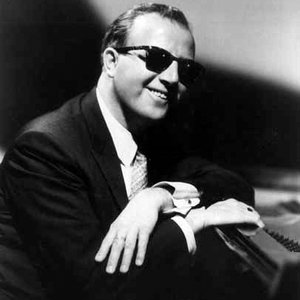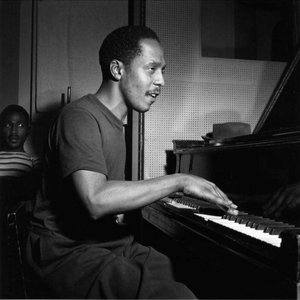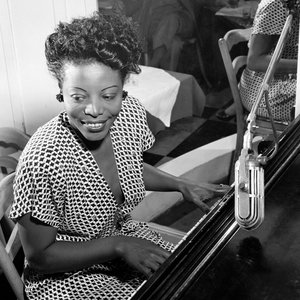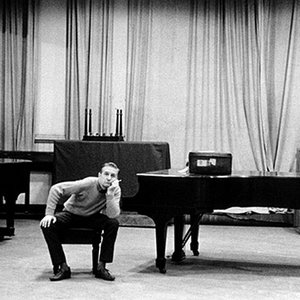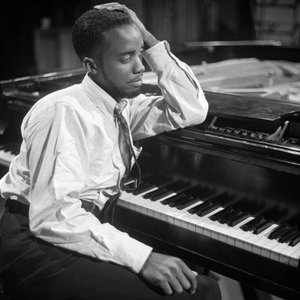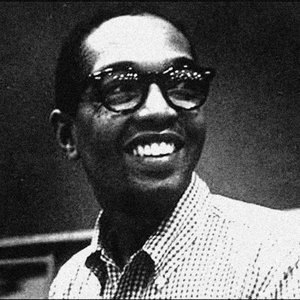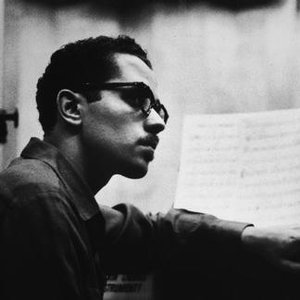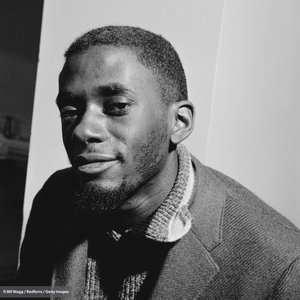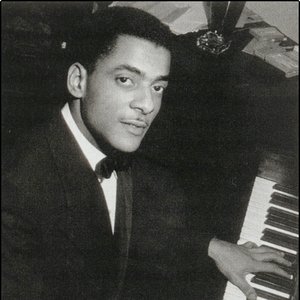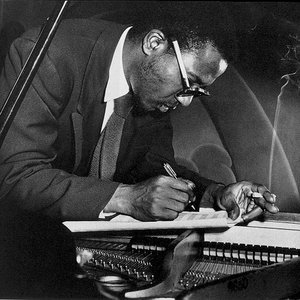Biography
-
Born
29 November 1915
-
Born In
Dayton, Montgomery County, Ohio, United States
-
Died
31 May 1967 (aged 51)
William Thomas "Billy" Strayhorn (November 29, 1915 – May 31, 1967) was an American jazz composer, pianist, lyricist, and arranger, best known for his successful collaboration with bandleader and composer Duke Ellington lasting nearly three decades. His compositions include "Take the 'A' Train," "Chelsea Bridge," and "Lush Life."
Strayhorn was born in Dayton, Ohio. His family soon moved to the Homewood section of Pittsburgh, Pennsylvania. However, his mother's family was from Hillsborough, North Carolina, and she sent him there to protect him from his father's drunken sprees. Strayhorn spent many months of his childhood at his grandparents' house in Hillsborough. In an interview, Strayhorn said that his grandmother was his primary influence during the first ten years of his life. He first became interested in music while living with her, playing hymns on her piano, and playing records on her Victrola record player.
Strayhorn returned to Pittsburgh, and attended Westinghouse High School, later attended by Erroll Garner and Ahmad Jamal. In Pittsburgh, he began his musical career, studying classical music for a time at the Pittsburgh Music Institute, writing a high school musical, forming a musical trio that played daily on a local radio station, and, while still in his teens, composing (with lyrics) the songs "Life Is Lonely" (later renamed "Lush Life"), "My Little Brown Book", and "Something to Live For". While still in grade school, he worked odd jobs to earn enough money to buy his first piano. While in high school, he played in the school band, and studied under the same teacher who had also instructed jazz pianists Erroll Garner and Mary Lou Williams. By age 19, he was writing for a professional musical, Fantastic Rhythm.
Though classical music was Strayhorn’s first love, his ambition to become a classical composer was shot down by the harsh reality of a black man trying to make it in the then almost completely white classical world. Strayhorn was then introduced to the music of pianists like Art Tatum and Teddy Wilson at age 19. These musicians guided him into the realm of jazz where he remained for the rest of his life. His first jazz exposure was in a combo called the Mad Hatters that played around Pittsburgh.
He met Duke Ellington in December 1938, after an Ellington performance in Pittsburgh (he had first seen Ellington play in Pittsburgh in 1933). Here he first told, and then showed, the band leader how he would have arranged one of Duke's own pieces. Ellington was impressed enough to invite other band members to hear Strayhorn. At the end of the visit, he arranged for Strayhorn to meet him when the band returned to New York. Strayhorn worked for Ellington for the next quarter century as an arranger, composer, occasional pianist and collaborator until his early death from cancer. As Ellington described him, "Billy Strayhorn was my right arm, my left arm, all the eyes in the back of my head, my brain waves in his head, and his in mine."
Strayhorn's relationship with Ellington was always difficult to pin down: Strayhorn was a gifted composer and arranger who seemed to flourish in Duke's shadow. Ellington was somewhat of a father figure and the band, by and large, was affectionately protective of the diminutive, mild-mannered, unselfish Strayhorn, nicknamed by the band "Strays", "Weely", and "Swee' Pea". Ellington may have taken advantage of him, but not in the mercenary way that others had taken advantage of Ellington; instead, he used Strayhorn to complete his thoughts, while giving Strayhorn the freedom to write on his own and enjoy at least some of the credit he deserved. Though Duke Ellington took credit for much of Strayhorn’s work, he did not maliciously drown out his partner. Ellington would make jokes onstage like, "Strayhorn does a lot of the work but I get to take the bows!"
Strayhorn composed the band's best known theme, "Take the "A" Train", and a number of other pieces that became part of the band’s repertoire. In some cases Strayhorn received attribution for his work such as "Lotus Blossom", "Chelsea Bridge", and "Rain Check", while others, such as "Day Dream" and "Something to Live For", were listed as collaborations with Ellington or, in the case of "Satin Doll" and "Sugar Hill Penthouse", were credited to Ellington alone. Strayhorn also arranged many of Ellington's band-within-band recordings and provided harmonic clarity, taste, and polish to Duke's compositions. On the other hand, Ellington gave Strayhorn full credit as his collaborator on later, larger works such as Such Sweet Thunder, A Drum Is a Woman, The Perfume Suite and The Far East Suite, where Strayhorn and Ellington worked closely together. Strayhorn also often sat in on the piano with the Ellington Orchestra, both live and in the studio.
Detroit Free Press music critic Mark Stryker concludes that the work of Strayhorn and Ellington in Anatomy of a Murder is "indispensable, … too sketchy to rank in the top echelon among Ellington-Strayhorn masterpiece suites like Such Sweet Thunder and The Far East Suite, but its most inspired moments are their equal." Film historians have recognized the soundtrack "as a landmark – the first significant Hollywood film music by African Americans comprising non-diegetic music, that is, music whose source is not visible or implied by action in the film, like an on-screen band." The score avoided the cultural stereotypes which previously characterized jazz scores and rejected a strict adherence to visuals in ways that presaged the New Wave cinema of the ’60s."
In 1960 the two collaborated on the album The Nutcracker Suite, recorded for the Columbia label and featuring jazz interpretations of "The Nutcracker" by Tchaikovsky, arranged by the two. The original album cover is notable for the inclusion of Strayhorn's name and picture along with Ellington's on the front.
Shortly before Ellington went on his second European tour with his orchestra, from March to May 1939, Ellington announced to his sister Ruth and son Mercer Ellington that Strayhorn "is staying with us." Through Mercer, Strayhorn met his first partner, African-American musician Aaron Bridgers, with whom Strayhorn lived until Bridgers moved to Paris in 1947.
Strayhorn was openly gay. He participated in many civil rights causes. As a committed friend to Dr. Martin Luther King, Jr., he arranged and conducted "King Fit the Battle of Alabam'" for the Ellington Orchestra in 1963 for the historical revue (and album) My People, dedicated to Dr. King.
Strayhorn's strong character left an impression on many people who met him. He had a major influence on the career of Lena Horne, who wanted to marry Strayhorn and considered him to have been the love of her life. Strayhorn used his classical background to improve Horne's singing technique. They eventually recorded songs together. In the 1950s, Strayhorn left his musical partner Duke Ellington for a few years to pursue a solo career of his own. He came out with a few solo albums and revues for the Copasetics (a New York show-business society), and took on theater productions with his friend Luther Henderson. Strayhorn’s compositions are known for the bittersweet sentiment and classically infused designs that set him apart from Ellington.
Strayhorn was diagnosed with esophageal cancer in 1964, which eventually caused his death in 1967. Strayhorn finally succumbed in the early morning on May 31, 1967, in the company of his partner, Bill Grove. It has often been falsely reported that Strayhorn died in Lena Horne's arms. By her own account, Horne was touring in Europe when she received the news of Strayhorn's death. His ashes were scattered in the Hudson River by a gathering of his closest friends.
While in the hospital, he had submitted his final composition to Ellington. "Blood Count" was used as the third track to Ellington's memorial album for Strayhorn, …And His Mother Called Him Bill, which was recorded several months after Strayhorn's death. The last track of the album is a spontaneous solo version of "Lotus Blossom" performed by Ellington, who sat at the piano and played for his friend while the band (who can be heard in the background) packed up after the formal end of the recording session.
Strayhorn's arrangements had a tremendous impact on the Ellington band. Ellington always wrote for the personnel he had at the time, showcasing both the personalities and sound of soloists such as Johnny Hodges, Harry Carney, Ben Webster, Lawrence Brown and Jimmy Blanton, and drawing on the contrasts between players or sections to create a new sound for his band. Strayhorn brought a more linear, classically schooled ear to Ellington’s works, setting down in permanent form the sound and structures that Ellington sought.
Strayhorn’s own work, particularly his pieces written for Johnny Hodges on alto saxophone, often had a bittersweet, languorous flavor.
A Pennsylvania State historical Marker was placed at Westinghouse High School, 1101 N. Murtland St., Homewood, Pittsburgh, PA highlighting his accomplishments and marking the high school he graduated from.
The former Regent Theatre in Pittsburgh's East Liberty neighborhood was renamed the Kelly-Strayhorn Theater in honor of Billy Strayhorn and fellow Pittsburgher Gene Kelly in 2000. It is a community based performing arts theatre.
The following is a compilation of important and interesting dates in the life of Billy Strayhorn:
November 29, 1915 - William Thomas Strayhorn born in Miami Valley Hospital, Dayton, Ohio to James Strayhorn and the former Lillian Craig.
1920 - After periods living in various locations including Montclair, New Jersey, the Strayhorns settle in greater Pittsburgh, Pennsylvania.
1926 - Billy Strayhorn begins private lessons.
1927 - In seventh grade, Strayhorn starts his music study at Westinghouse High School under Carl McVicker and other teachers.
1929-1933 - While at Westinghouse, Strayhorn engages in various musical activities, including participation in the Orchestra Club. As first pianist with the Senior Orchestra, Strayhorn performs Edward Greig's Piano Concerto, opus 16, among other pieces. During this period, he begins composing his first works combining jazz and classical elements.
November 6, 1935 - Premiere of "Fantastic Rhythm," a musical revue with book, music and lyrics by Billy Strayhorn, performed at Westinghouse High School.
September, 1936 - Strayhorn attends the Pittsburgh Musical Institute, a private music conservatory.
1933-1936 - Working on the piece sporadically over a period of several years, Strayhorn composes "Lush Life."
1937-1938 - Strayhorn performs around the Pittsburgh area with his own jazz combo, The Madhatters.
December 2, 1938 - Billy Strayhorn meets Duke Ellington at the Stanley Theater, where Ellington was performing with his orchestra.
January 23, 1939 - Strayhorn visits Ellington at the Adams Theater in Newark, New Jersey and accepts Ellington's offer to serve as Ellington's collaborator. Shortly after this, Strayhorn moves from Pittsburgh into Ellington's home at 409 Edgecombe Avenue in Harlem's Sugar Hill District.
March 21, 1939 - The Duke Ellington Orchestra records its first Strayhorn composition, "Something to Live For."
1941 - During a radio ban on music composed by members of the ascap, including Duke Ellington, Strayhorn emerges through compositions including "Take the 'A' Train," "Johnny Come Lately," "Chelsea Bridge" and "After All."
December, 1945; December 1948 - Strayhorn wins Down Beat poll as arranger.
March 29, 1949 - First recording of "Lush Life," by Nat "King" Cole.
1950 - Strayhorn joins the Copasetics, a fraternal organization of show-business insiders based in Harlem. Soon, he is elected President and leads the group in social and charitable activities.
November, 1950 - Ellington-Strayhorn piano duet recorded, released on LP billed as the Billy Strayhorn Trio.
May 8, 1956 - National television broadcasts of Ellington Strayhorn theatrical collaboration, "A Drum is a Woman," an allegorical history of jazz told in music and dance.
Mid-late 1950's - Strayhorn records extensively with Johnny Hodges, serving as musical director, arranger and pianist.
April 28, 1957 - Debut of Ellington-Strayhorn collaboration, "Such Sweet Thunder," an instrumental suite inspired by the works of Shakespeare, at New York's Town Hall.
April 14, 1959 - Billy Strayhorn Septet LP recorded.
June, 1960 - Ellington-Strayhorn adaptation of "the Nutcracker Suite" recorded.
January, 1961 - Strayhorn solo LP, "The Peaceful Side," recorded in Paris for release by United Artists Records.
December, 1961 - Billy Strayhorn and the Orchestra LP recorded for release on the Verve label.
December, 19-21, 1966 - Ellington-Strayhorn collaboration, "The Far East Suite," recorded.
May 31, 1967 - Billy Strayhorn dies of cancer of the esophagus at age 51.
Artist descriptions on Last.fm are editable by everyone. Feel free to contribute!
All user-contributed text on this page is available under the Creative Commons Attribution-ShareAlike License; additional terms may apply.

